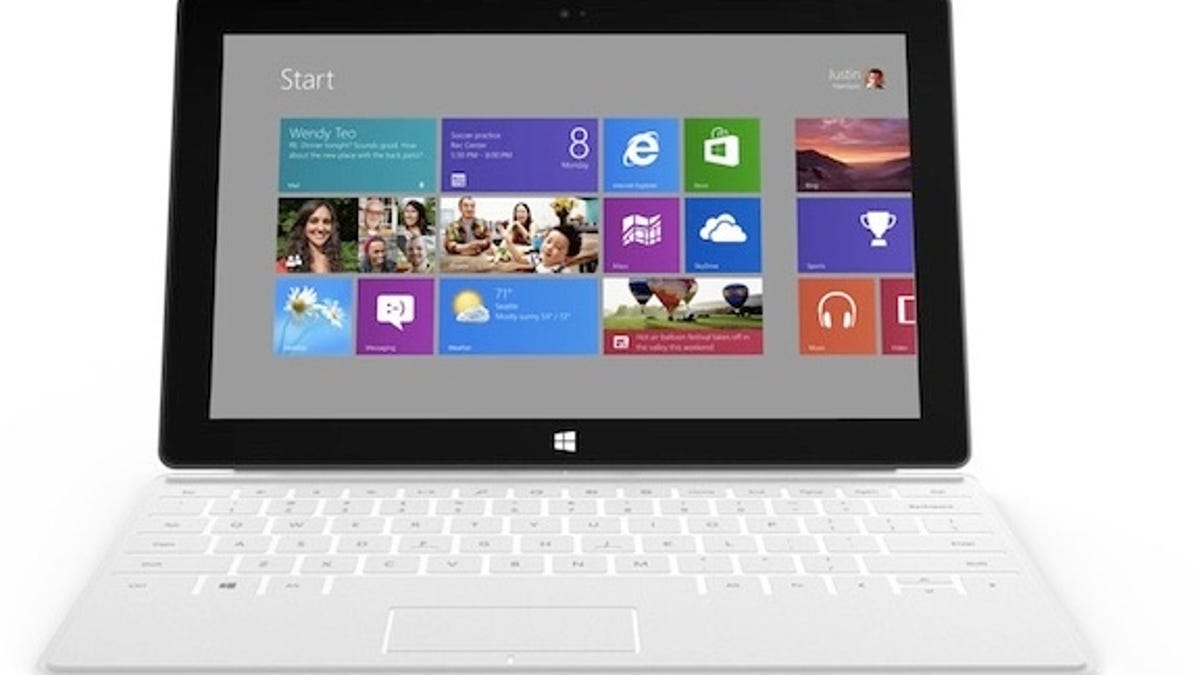Surface to arrive with Windows 8 on 10/26, says Microsoft
Microsoft's Surface tablet will land on the same date as Windows 8. A lot is riding on Windows 8 and Surface, as Microsoft makes clear in its annual report.

Though it's not exactly an earth-shattering revelation, Microsoft has confirmed that Surface tablets will arrive October 26 along with Windows 8.
"The next version of our operating system, Windows 8, will be generally available on October 26, 2012. At that time, we will begin selling the Surface, a series of Microsoft-designed and manufactured hardware devices," Microsoft said in its annual report filed this week with the U.S. Securities and Exchange Commission.
Microsoft has said before that Surface products "would be available the same time that Windows 8" was launched, but it's reassuring to see the date in writing.
And, remember, those are Windows RT tablets only. The Intel-based Surface Pro is expected about 90 days later, according to Microsoft.
Microsoft has also peppered disclaimers throughout the annual report (these appear often in SEC filings) about the success, or lack thereof, of Windows 8.
In fall 2012, we are launching Windows 8...Its success depends on a number of factors including the extent to which customers embrace its new user interface and functionality, successfully coordinating with our OEM partners in releasing a variety of hardware devices that take advantage of its features, and attracting developers at scale to ensure a competitive array of quality applications. We expect to incur substantial marketing costs in launching Window 8 and associated services and devices, which may reduce our operating margins."
That last part about "may reduce operating margins" is something Wall Street will of course be watching closely. In short, if Windows 8 is not relatively successful, this may fuel doubts about Microsoft's viability in the age of the iPad and Android.
The Surface products will be offered in basically two forms. One is expected to be a more price-friendly version running Windows RT on top of ARM chips. The other, likely a bit pricier, will run Windows 8 Pro on top of Intel "Ivy Bridge" processors.
And pricing? While there's a lot of whacky speculation about sky-high pricing, Microsoft's own guidance portends a more rational pricing scheme.
"Suggested retail pricing will be announced closer to availability and is expected to be competitive with a comparable ARM tablet or Intel Ultrabook-class PC," Microsoft said in a statement.
Based on that statement, a back-of-the-envelope estimate could put -- the operative word here is "could" as this is simply speculation -- Windows RT products as low as $500-$600 and Windows 8 Pro Intel-based products ranging up to $1,000, or possibly higher.
That said, Microsoft's pricing plans are undoubtedly in a state of flux, and we won't know until the company tells us.

